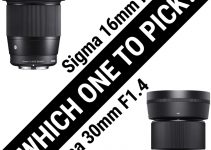Gimbal shooting simultaneously makes handheld video shooting much easier and yet complicates other aspects of recording. Working with manual focus or adapted lenses on a mirrorless camera?
On a normal shoot you can just easily control the focus just by turning the focusing ring on the lens. Gimbals don’t let you do that easily without potentially adding shake to your shot.
Wedding filmmaker Matt Johnson has some tips for using manual focus lenses on a gimbal. He even points out his reasons for doing so, including that the Sony a7S II he uses doesn’t have great AF and he continues to use an adapted lenses or affordable manual-only glass.
Surprisingly, most of his tips and techniques don’t actually involve focusing the lens itself. It has to do with best practices and lens choices that mean you don’t have to focus all that much or at all.
Starting off, he points out that for gimbal work wide-angle lenses generally work a lot better. Johnson’s primary pick is a Sigma 24mm f/1.4, which he has in Nikon mount, with an adapter.
He also uses a fisheye. When shooting at 24mm or with the fisheye, even wide open, the depth of field is generally deep enough that most of the image is in focus. This helps allow for some movement with the gimbal without worry.
Stopping down a bit helps make the depth of field even deeper. Try keeping your lens stopped down a bit whenever possible. Shooting outside and getting establishing shots can benefit greatly from stopping down to something like f/8.
When you need to shoot wide open, you will want to be careful with where you stand in relation to your subject. By maintaining the same approximate distance as you move you will keep your subject in focus.
This can be tough and will limit your ability to quickly move in closer to your subject, but is good practice for many types of shots.
One thing to practice is holding the gimbal with one hand and making careful adjustments to focus when needed and then moving in relation to that. It’s near impossible to perform a dramatic move and manually focus your lenses.
If you want a reason why to go for manual focus instead of autofocus, it is all about control and reliability. You do not want autofocus to decide at the worst possible moment to change to another person or even the background. Manual focus, even with its restrictions, can help guarantee you will get the shot.
Do you still use manual focus with your gimbals? Or have you moved to autofocus?
[source: Matt WhoisMatt Johnson]
Order Links:
- Sony a7S II Mirrorless Camera (B&H, Amazon)
- Sigma 24mm f/1.4 DG HSM Art Lens for Nikon (B&H, Amazon)
- Fotodiox PRO Nikon F to Sony E Adapter (B&H)
- Rokinon 8mm f/3.5 Fisheye Lens (B&H, Amazon)
- Zheyun-Tech Crane-2 Gimbal Stabilizer (B&H, Amazon)
Disclaimer: As an Amazon Associate partner and participant in B&H and Adorama Affiliate programmes, we earn a small comission from each purchase made through the affiliate links listed above at no additional cost to you.


